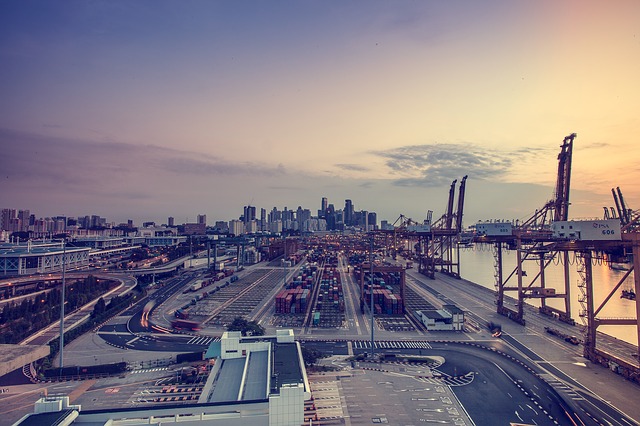IoT for the Shipping Industry – a segment of IIoT that can realize an immediate ROI
New York City is known as the city that never sleeps. It is the hub of commerce by day and the center of nightlife at night. Crowds of people fill the streets, along with a variety of different sized vehicles, all vying for the same precious road space. Streetcar vendors peddle their wares, which may include fashion scarves, leather gloves, counterfeit watches, soft pretzels, roasted nuts, and hot kebabs.
Living in New York has its advantages, such as being able to connect with people from every imaginable industry. One industry that’s really fascinating to watch, especially for children, is shipping. You can watch the big ships come into the docks, loaded with gigantic, multi-colored shipping containers. Then, the cranes come and lift the colorful containers off the ships and place them onto neatly queued, waiting trucks.
This got me thinking. There are so many moving pieces that are interdependent with one another. What would happen if one piece of the puzzle were to suddenly stop? For example, what happens when a ship is late to port? Although everything runs on a schedule, sometimes things just happen. Many times, just like with everything else in a big city, there is a “traffic jam” at the port, where the infrastructure just can’t handle the volume of ships coming in. When this happens, the trucks that arrive to pick up the containers sit there and wait, sometimes for days, while racking up costs for the business owners!
This is one segment of Industrial IoT (IIoT) that can realize an immediate return on their investment (ROI). Sensors on the ships work together with sensors at the docks to monitor the volume of goods and unloading speeds. The data obtained from the sensors are fed through sophisticated applications which utilize big data analytics to determine a realistic ETA. Intelligent IoT Messaging technology provides the ability for anyone to query the ETA status of the ship. For example, prior to dispatching a fleet of trucks, the dispatcher can just simply send an SMS text message to the ship using natural language, “What’s your ETA?”. If there are delays at the port, the ship will text back an adjusted ETA, that is calculated in real time. Furthermore, should any sudden schedule changes occur, the ship will proactively notify the dispatcher. This saves the business a significant amount of money by not wasting man hours (or polluting the environment) with unnecessarily idling trucks.
Here is another way the shipping industry can benefit from Industrial IoT technology. The shipping cranes that lift the heavy containers off the cargo ship and onto a truck have motors, control valves, relays, and other moving parts. These parts can wear out and break down. Performing preventative maintenance on them is a good idea; however, this means that the crane is out of service for a set period of time, at regular intervals. Besides the logistical headaches of managing the deluge of traffic with one less crane in service, there are substantial added costs of throwing away good machine parts with many hours of useful life available.
Industrial IoT sensors are able to detect when a critical part is just beginning to wear out. Artificial Intelligence (AI) technology integrates with the smart sensors to give operators a true estimate of the life expectancy of each part so that they can choose to take the crane offline when it is most convenient. Furthermore, because you’re only going to replace a single component, the crane does not have to be offline for long. For example, suppose a crane develops a problem with one of its hydraulic pumps. The Industrial IoT sensors will immediately detect it and relay the problem to the Artificial Intelligence engine which will analyze the problem, determine the optimal maintenance window, schedule the maintenance window, and order the necessary part(s) from the least expensive registered online supplier. After all this, it will send a group message to the machine operator and shift supervisor via WhatsApp, bringing them up to date on what’s happening.
Besides the cost savings of not having to replace parts as frequently, money is saved by keeping operations flowing smoothly, and not having to pay for wasted hours of labor. The cost savings get passed on to the consumer in the form of lower shipping and delivery charges, and everyone benefits.
My question for you is, how will Industrial IoT Technology improve your business?
 This article was written by Avrohom Gottheil, CEO of New York based SimiPlex Technologies, LLC, where he leverages 20+ years in Telecom to enable people to chat with their smart devices as easily as they speak with each other. Avrohom is a Top-ranked global IoT expert by Postscapes.com, and a frequent speaker on using technology to accelerate revenue growth.
This article was written by Avrohom Gottheil, CEO of New York based SimiPlex Technologies, LLC, where he leverages 20+ years in Telecom to enable people to chat with their smart devices as easily as they speak with each other. Avrohom is a Top-ranked global IoT expert by Postscapes.com, and a frequent speaker on using technology to accelerate revenue growth.



